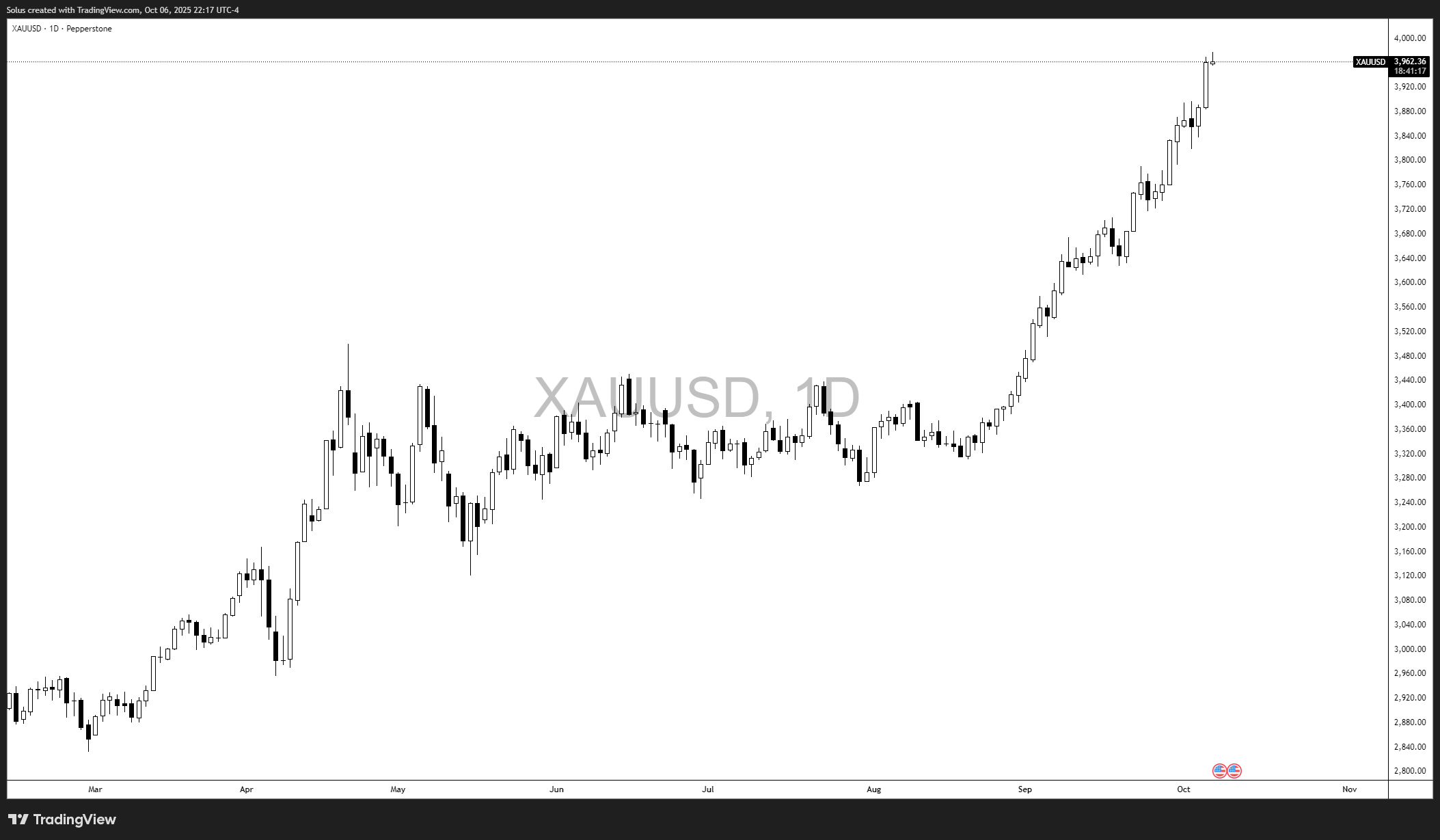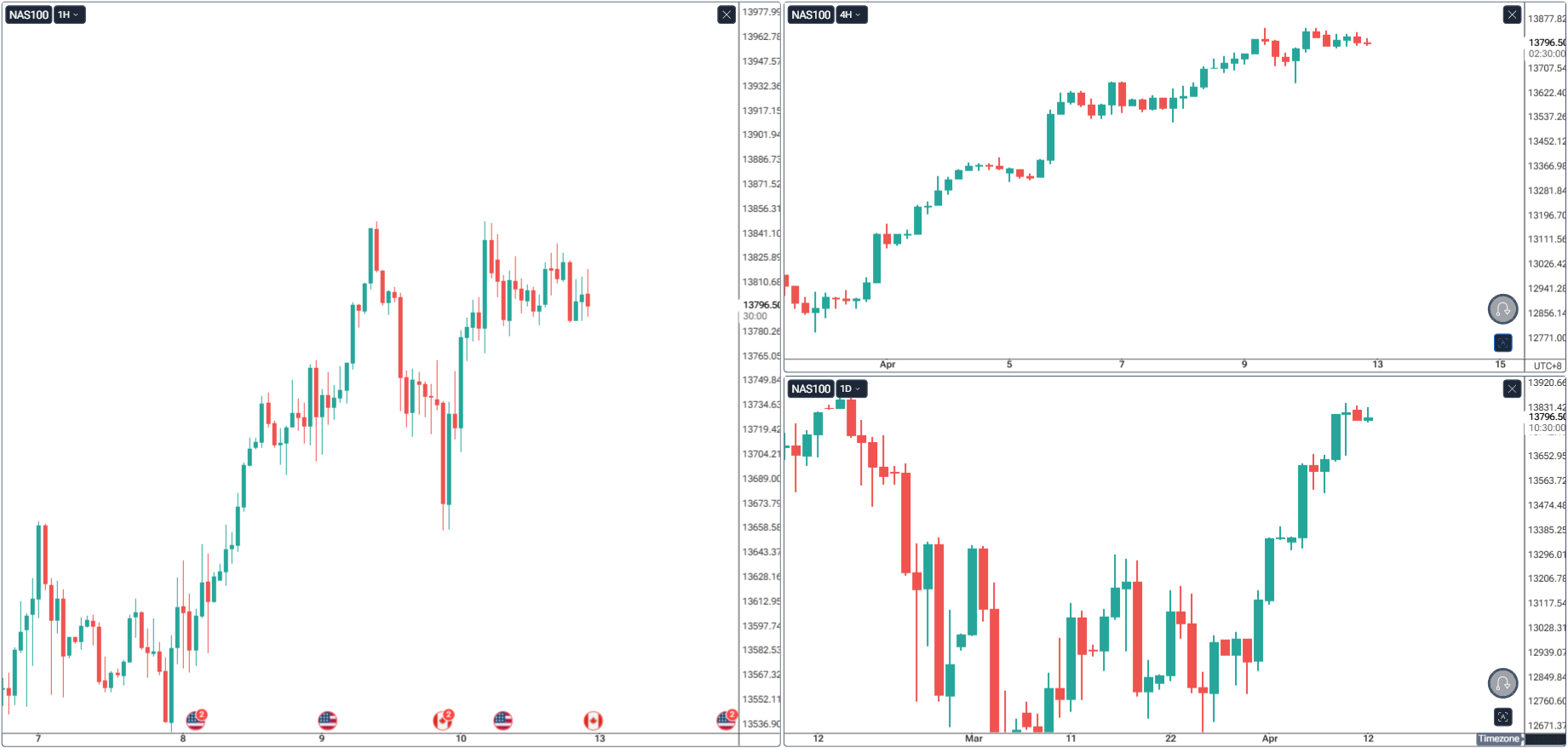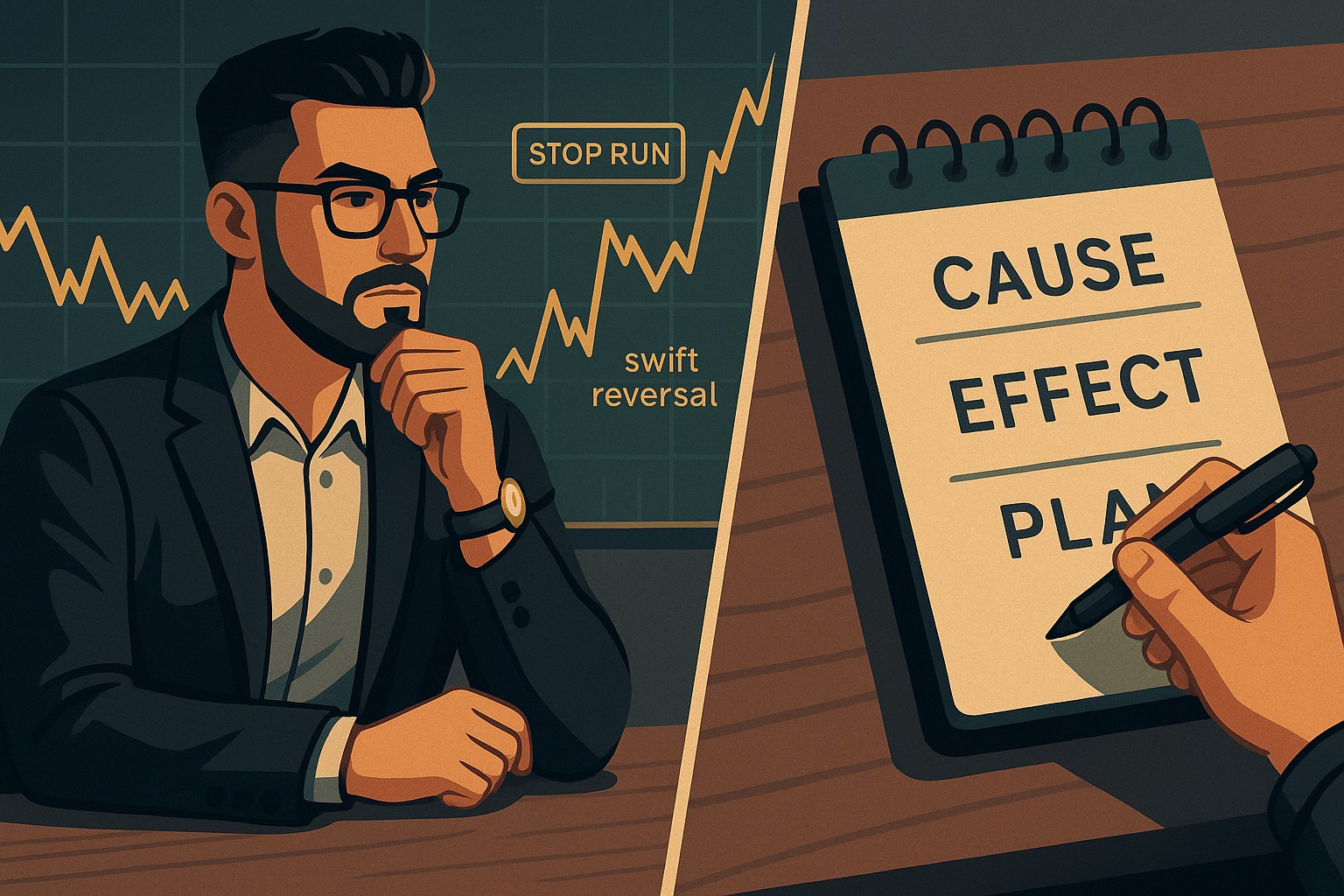The Market Basics for Swing Trading: Markets, Participants & Timeframes
2025-10-07 10:41:48
When you first step into trading, it can feel like entering a loud, fast-paced marketplace - charts flickering, headlines popping, and everyone chasing the next big move. But once you slow down and learn how markets actually work, the chaos starts making sense. Every candle has a reason. Every move has a driver. And every market - from stocks to gold - follows its own rhythm.

If you truly want to thrive as a swing trader, you need to master the foundation: what you are trading, who moves the market, and how to read the story that price tells you every day. If you missed the starting point of this series, begin with Part 1: Introduction to Swing Trading.
1. Understanding Financial Markets

Think of financial markets as the world’s largest exchange system where traders, banks, and institutions buy and sell assets based on perceived value and opportunity.
Each market has its own heartbeat:
- Stocks - Ownership in companies. They move on earnings, innovation, and investor confidence.
- Forex - The exchange of currencies like EUR/USD and USD/JPY. Deep liquidity and macro trends make it a favorite for swing traders. If you are new, see this primer: Forex Trading Strategy for Beginners.
- Commodities - Gold and oil respond to supply-demand dynamics and geopolitics. If gold is on your watchlist, bookmark this: How to Swing Trade Gold (XAU/USD) Using Smart Money Concepts.
- Indices - Baskets like NASDAQ or S&P 500 reflect broader risk appetite. To approach indices with structure, study How To Trade and Scalp Indices at the Open Using SMC.
- Crypto - High volatility and 24/7 movement. Structure still applies, but risk control must be tighter.
Markets are ecosystems - interconnected, reactive, and constantly evolving. For example, when global risk appetite improves, indices often rally while safe havens like gold soften. To read these shifts with confidence, work through the foundation of price and trends here: The Ultimate Guide to Understanding Market Trends and Price Action.
2. Market Participants - Retail vs Institutions

Every price movement has a cause - and behind that cause is someone pressing buy or sell. Not everyone plays the same game.
- Retail traders are individuals operating through brokers, usually trading smaller positions and reacting to price, news, or emotion.
- Institutional traders include banks, hedge funds, pensions, and prop firms managing large capital. They plan entries, accumulate gradually, and use liquidity to fill size. If you want to understand why their playbook works, read this explainer: Why Smart Money Concepts Work - Liquidity and Price Action.
Swing traders who last do not fight institutional flow - they align with it. If the Daily chart builds higher lows, there is a good chance someone with deep pockets is accumulating. If H4 shows a sharp wick sweep followed by strong close, smart money may have reloaded.
3. Price Charts - The Language of Markets

Charts are the market’s diary. Each candle is a sentence. Each swing is a paragraph.
- Candlestick charts show open, high, low, and close inside each bar. If you want to go deeper on how candle context aligns with SMC confirmation, see Mastering Candlestick Pattern Analysis with the SMC Strategy.
- OHLC bar charts provide the same data with a cleaner aesthetic.
- Line charts connect closes and simplify the view, but hide intrabar detail.
Timeframes change the story you see. A 1-minute chart shouts noise. A Daily chart hums the theme. Your job as a swing trader is to listen for the theme, then drop to a lower timeframe only to time your risk.
4. Why Swing Traders Use the Daily, H4, and H1

These three timeframes are the backbone of swing trading:
- Daily (D1) - Map the terrain. Identify the main trend, external highs and lows, and where larger liquidity likely sits.
- 4-Hour (H4) - Read the rhythm. Spot consolidations, reversals, or continuation structures.
- 1-Hour (H1) - Execute with precision. Confirm displacement, refine entries, and manage positions.
This multi-timeframe confluence is not optional - it is the edge. To lock this in, study this guide end to end: The Power of Multi-Timeframe Analysis in Smart Money Concepts.
5. The Narrative Behind Price - Cause and Effect

Traders mature when they stop chasing candles and start reading cause and effect. Price does not move at random. It reflects the sum of decisions across participants.
Ask:
- What triggered this impulse?
- Who is trapped after that sweep?
- Where will price rebalance if institutions still have business to complete?
This narrative thinking reduces noise and anchors patience. It also pairs well with rule-based risk - because even great reads need downside protection. Keep this on your desk: The Ultimate Guide to Risk Management in Trading - 2025 Compilation.
6. The Rhythm of Patience

Swing trading is not about catching every move. It is about catching meaningful ones. You might place only two to three trades a week, but when the higher timeframes align, clarity and reward improve significantly. If you like an indicator-based confirmation layer for trend rhythm, wrap your structure with this field manual: Moving Averages Trading Strategy Playbook.
Real-Life Analogy - The Road Trip
Think of swing trading like a long road trip.
- The Daily chart is your map - it sets your destination.
- The H4 chart is your navigation - it tells you where to turn.
- The H1 chart is your dashboard - it guides immediate decisions.
Try driving with only the dashboard and you will get lost fast. That is what trading feels like without the higher timeframe context.
A Quick Pathway For Different Markets
If you want to go deeper on specific assets while applying this exact framework:
- Indices - Once the Daily and H4 bias is set, learn entry timing and session nuances here: How To Trade and Scalp Indices at the Open Using SMC.
- Gold - Use Daily key levels, watch for H4 structure shifts, then refine on H1. For a full swing blueprint, study Swing Trading Gold with SMC.
Final Thoughts
The basics are not just beginner material - they are the scaffolding that holds everything else. Markets, participants, charts, and timeframes are the pillars. Smart Money concepts, liquidity models, indicators, and execution rules sit on top of them. Without these foundations, every strategy eventually cracks.
Commit to the narrative: define your Daily bias, confirm on H4, execute on H1, and protect the downside with clear risk rules. If you want a single resource to strengthen that last part, revisit the 2025 master guide: Risk Management Compilation.
Start Practicing with Confidence - Risk-Free!
- Trade forex, indices, gold, and more
- Access ACY, MT4, MT5, & Copy Trading Platforms
- Practice with zero risk
It’s time to go from theory to execution - risk-free.
Create an Account. Start Your Free Demo!
Check Out My Contents:
Strategies That You Can Use
Looking for step-by-step approaches you can plug straight into the charts? Start here:
- How To Trade & Scalp Indices at the Open Using Smart Money Concepts (SMC)
- How to Trade Breakouts Effectively in Day Trading with Smart Money Concepts
- Complete Step-by-Step Guide to Day Trading Gold (XAU/USD) with Smart Money Concepts (SMC)
- The Power of Multi-Timeframe Analysis in Smart Money Concepts (SMC)
- Forex Trading Strategy for Beginners
- Mastering Candlestick Pattern Analysis with the SMC Strategy for Day Trading
- How to Use Fibonacci to Set Targets & Stops (Complete Guide)
- RSI Divergence Trading Strategy for Gold: How to Identify and Trade Trend Reversals
- Stochastics Trading Secrets: How to Time Entries in Trending Markets using Stochastics
- Gold Trading Stochastics Strategy: How to Trade Gold with 2R - 3R Targets
- RSI Hidden Divergence Explained: How to Spot Trend Continuations Like a Pro
- Moving Averages Trading Strategy Playbook
- Mastering Fibonacci Trading Psychology - Trusting the Levels, Managing the Mind
- Mastering Price Action at Key Levels - How to Spot, Trade, and Win at the Most Crucial Zones
- Mastering Retests: How to Enter with Confirmation After a Breakout
Indicators / Tools for Trading
Sharpen your edge with proven tools and frameworks:
- The Ultimate Guide to Risk Management in Trading - A Complete Compilation for 2025
- Moving Averages Trading Strategy Playbook
- How to Think Like a Price Action Trader
- Mastering Fibonacci Trading Psychology - Trusting the Levels, Managing the Mind
How To Trade News
News moves markets fast. Learn how to keep pace with SMC-based playbooks:
- Why Smart Money Concepts Work in News-Driven Markets - CPI, NFP, and More
- How to Trade NFP Using Smart Money Concepts (SMC)-A Proven Strategy for Forex Traders
- How to Trade CPI Like Smart Money - A Step-by-Step Guide Using SMC
Learn How to Trade US Indices
From NASDAQ opens to DAX trends, here’s how to approach indices like a pro:
- How to Start Trading Indices and Get into the Stock Market with Low Capital (2025 Guide)
- Best Indices to Trade for Day Traders | NASDAQ, S&P 500, DAX + Best Times to Trade Them
- How To Trade & Scalp Indices at the Open Using Smart Money Concepts (SMC)
- NAS100 - How to Trade the Nasdaq Like a Pro (Smart Money Edition)
How to Start Trading Gold
Gold remains one of the most traded assets - - here’s how to approach it with confidence:
- How to Swing Trade Gold (XAU/USD) Using Smart Money Concepts: A Simple Guide for Traders
- Complete Step-by-Step Guide to Day Trading Gold (XAU/USD) with Smart Money Concepts (SMC)
- The Ultimate Guide to Backtesting and Trading Gold (XAU/USD) Using Smart Money Concepts (SMC)
- Why Gold Remains the Ultimate Security in a Shifting World
- How to Exit & Take Profits in Trading Gold Like a Pro: Using RSI, Range Breakdowns, and MAs as Your Confluence
How to Trade Japanese Candlesticks
Candlesticks are the building blocks of price action. Master the most powerful ones:
- Mastering the Top Japanese Candlesticks: The Top 5 Candlesticks To Trade + Top SMC Candlestick Pattern
- How to Trade Candlestick Patterns with High Probability: A Complete Guide for Beginners
- The Top Japanese Candlestick Guide: What is an Engulfing Pattern and How to Trade It?
- Piercing Pattern Candlestick Explained: How to Trade It - Step-By-Step Guide
- Morning & Evening Star Candlestick Patterns - How to Trade Market Reversals with Confidence
How to Start Day Trading
Ready to go intraday? Here’s how to build consistency step by step:
- 5 Steps to Start Day Trading: A Strategic Guide for Beginners
- 8 Steps How to Start Forex Day Trading in 2025: A Beginner’s Step-by-Step Guide
- 3 Steps to Build a Trading Routine for Consistency and Discipline - Day Trading Edition
- The Ultimate Guide to Understanding Market Trends and Price Action
- Trading with Momentum: The Best Trading Session to Trade Forex, Gold and Indices
Learn how to navigate yourself in times of turmoil
Markets swing between calm and chaos. Learn to read risk-on vs risk-off like a pro:
- How to Identify Risk-On and Risk-Off Market Sentiment: A Complete Trader’s Guide
- How to Trade Risk-On and Risk-Off Sentiment - With Technical Confirmation
- The Ultimate Guide to Understanding Market Trends and Price Action
Want to learn how to trade like the Smart Money?
Step inside the playbook of institutional traders with SMC concepts explained:
- Why Smart Money Concepts Work: The Truth Behind Liquidity and Price Action
- Mastering the Market with Smart Money Concepts: 5 Strategic Approaches
- Understanding Liquidity Sweep: How Smart Money Trades Liquidity Zones in Forex, Gold, US Indices
- The SMC Playbook Series Part 1: What Moves the Markets? Key Drivers Behind Forex, Gold & Stock Indices
- The SMC Playbook Series Part 2: How to Spot Liquidity Pools in Trading-Internal vs External Liquidity Explained
- Fair Value Gaps Explained: How Smart Money Leaves Footprints in the Market
- Accumulation, Manipulation, Distribution: The Hidden Cycle That Runs Every Market
- Institutional Order Flow - Reading the Market Through the Eyes of the Big Players
- London Session Trading Secrets: How Smart Money Sets the High & Low of the Day
- Mastering the New York Session - Smart Money Concepts Guide
Master the World’s Most Popular Forex Pairs
Forex pairs aren’t created equal - - some are stable, some are volatile, others tied to commodities or sessions.
- The Top 5 All-Time Best Forex Pairs to Trade
- Top Forex Pairs Beyond the Big Five
- EUR/USD: The King of Forex
- USD/JPY: The Fast Mover
- GBP/USD: The Volatile Cable
- AUD/USD: The Commodity Currency
- USD/CAD: The Oil-Backed Pair
- GBP/JPY: How to Trade The Beast
- Asian & London Session Secrets
- Mastering the New York Session
Stop Hunting 101
If you’ve ever been stopped out right before the market reverses - - this is why:
- Stop Hunting 101: How Swing Highs and Lows Become Liquidity Traps
- Outsmarting Stop Hunts: The Psychology Behind the Trap
- How to Lessen Risk From Stop Hunts in Trading
- How Stop Hunts Trigger Revenge Trading - Breaking the Pain Cycle
- How to Accept Stop Hunts Without Losing Discipline - Shifting From Frustration to Focus
Trading Psychology
Mindset is the deciding factor between growth and blowups. Explore these essentials:
- The Mental Game of Execution - Debunking the Common Trading Psychology
- Managing Trading Losses: Why You Can Be Wrong and Still Win Big in Trading
- The Hidden Threat in Trading: How Performance Anxiety Sabotages Your Edge
- Why 90% of Retail Traders Fail Even with Profitable Trading Strategies
- Top 10 Habits Profitable Traders Follow Daily to Stay Consistent
- Top 10 Trading Rules of the Most Successful Traders
- Top 10 Ways to Prevent Emotional Trading and Stay Disciplined in the Markets
- Why Most Traders Fail - Trading Psychology & The Hidden Mental Game
- Emotional Awareness in Trading - Naming Your Triggers
- Discipline vs. Impulse in Trading - Step-by Step Guide How to Build Control
- Trading Journal & Reflection - The Trader’s Mirror
- Overcoming FOMO & Revenge Trading in Forex - Why Patience Pays
- Risk of Ruin in Trading - Respect the Math of Survival
- Identity-Based Trading: Become Your Trading System for Consistency
- Trading Psychology: Aligning Emotions with Your System
- Mastering Fear in Trading: Turn Doubt into a Protective Signal
- Mastering Greed in Trading: Turn Ambition into Controlled Growth
- Mastering Boredom in Trading: From Restless Clicking to Patient Precision
- Mastering Doubt in Trading: Building Confidence Through Backtesting and Pattern Recognition
- Mastering Impatience in Trading: Turn Patience Into Profit
- Mastering Frustration in Trading: Turning Losses Into Lessons
- Mastering Hope in Trading: Replacing Denial With Discipline
- When to Quit on Trading - Read This!
- The Math of Compounding in Trading
- Why Daily Wins Matter More Than Big Wins
- Scaling in Trading: When & How to Increase Lot Sizes
- Why Patience in Trading Fuels the Compounding Growth
- Step-by-Step Guide on How to Manage Losses for Compounding Growth
- The Daily Habits of Profitable Traders: Building Your Compounding Routine
- Trading Edge: Definition, Misconceptions & Casino Analogy
- Finding Your Edge: From Chaos to Clarity
- Proving Your Edge: Backtesting Without Bias
- Forward Testing in Trading: How to Prove Your Edge Live
- Measuring Your Edge: Metrics That Matter
- Refining Your Edge: Iteration Without Overfitting
- The EDGE Framework: Knowing When and How to Evolve as a Trader
- Scaling Your Edge: From Small Account to Consistency
Market Drivers
- Central Banks and Interest Rates: How They Move Your Trades
- Inflation & Economic Data: CPI Trading Strategy and PPI Indicator Guide
- Geopolitical Risks & Safe Havens in Trading (Gold, USD, JPY, CHF)
- Jobs, Growth & Recession Fears: NFP, GDP & Unemployment in Trading
- Commodities & Global Trade: Oil, Gold, and Forex Explained
- Market Correlations & Intermarket Analysis for Traders
Swing Trading 101
Risk Management
The real edge in trading isn’t strategy - it’s how you protect your capital:
- Mastering Risk Management: Stop Loss, Take Profit, and Position Sizing
- Why Risk Management Is the Only Edge That Lasts
- How Much Should You Risk per Trade? (1%, 2%, or Less?)
- The Ultimate Risk Management Plan for Prop Firm Traders - Updated 2025
- Mastering Position Sizing: Automate or Calculate Your Risk Like a Pro
- Martingale Strategy in Trading: Compounding Power or Double-Edged Sword?
- How to Add to Winners Using Cost Averaging and Martingale Principle with Price Confirmation
Suggested Learning Path
If you’re not sure where to start, follow this roadmap:
- Start with Trading Psychology → Build the mindset first.
- Move into Risk Management → Learn how to protect capital.
- Explore Strategies & Tools → Candlesticks, Fibonacci, MAs, Indicators.
- Apply to Assets → Gold, Indices, Forex sessions.
- Advance to Smart Money Concepts (SMC) → Learn how institutions trade.
- Specialize → Stop Hunts, News Trading, Turmoil Navigation.
This way, you’ll grow from foundation → application → mastery, instead of jumping around randomly.
Follow me for more daily market insights!
Jasper Osita - LinkedIn - FXStreet - YouTube
This content may have been written by a third party. ACY makes no representation or warranty and assumes no liability as to the accuracy or completeness of the information provided, nor any loss arising from any investment based on a recommendation, forecast or other information supplies by any third-party. This content is information only, and does not constitute financial, investment or other advice on which you can rely.
Try These Next
4 Powerful Tactics to Overcome the Most Costly Forex Mistakes
How to Master MT4 & MT5 - Tips and Tricks for Traders
The Importance of Fundamental Analysis in Forex Trading
Forex Leverage Explained: Mastering Forex Leverage in Trading & Controlling Margin
The Importance of Liquidity in Forex: A Beginner's Guide
Close All Metatrader Script: Maximise Your Trading Efficiency and Reduce Stress
Best Currency Pairs To Trade in 2025
Forex Trading Hours: Finding the Best Times to Trade FX
MetaTrader Expert Advisor - The Benefits of Algorithmic Trading and Forex EAs
Top 5 Candlestick Trading Formations Every Trader Must Know















